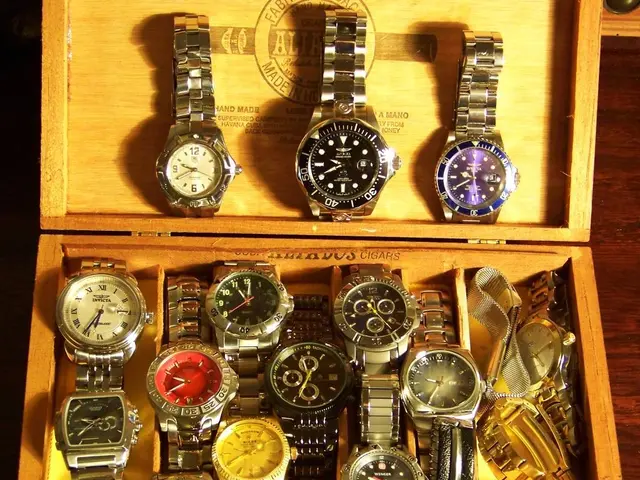Budget-Friendly Art Investing: Uncovering Hidden Gems in the Collectibles Market
In 2025, the realm of art and collectibles has never been more accessible, with the barrier to entry significantly lowered. No longer exclusive to the wealthy elite, anyone with a modest budget can embark on the journey of building a diversified portfolio of tangible assets, offering both aesthetic delight and financial potential.
This comprehensive guide will elucidate ten affordable ways to invest in unique collectibles, ranging from the works of emerging artists to vintage memorabilia. Ideal for seasoned collectors or novices alike, these strategies will guide you through the art market without strain on your wallet.
1. Limited Edition Prints and Photographs
As entry points into the art market, limited edition prints and photographs often prove more accessible. These pieces are typically produced in limited quantities, ensuring exclusivity while maintaining affordability. Many emerging artists release such works, presenting an opportunity to invest early in promising talents.
Tips:
- Explore local art fairs and exhibitions to uncover new artists
- Follow art platforms and social media channels for limited releases
2. Emerging Artists
Fostering burgeoning artists can yield both financial benefits and personal satisfaction. These artists often offer original pieces at more reasonable prices compared to established names, with their early works appreciating in value as their careers progress.
Tips:
- Research gradutes from art schools and local art communities
- Engage with artists personally through social media or studio visits
3. Vintage Posters and Prints
Classic film, concert, or advertisement posters have observed a rise in collectibility. They offer a nostalgic charm and are frequently found at affordable prices in antique shops or online marketplaces.
Tips:
- Research poster authenticity by look into its origin and printing details
- Maintain condition by framing and avoiding direct sunlight exposure
4. Art Books and Catalogues
First editions or signed copies of art books and exhibition catalogues hold value as collectibles. These publications provide insights into an artist's work and are often limited in production.
Tips:
- Look for books signed by artists or curators
- Store in a cool, dry location to preserve condition
5. Ceramics and Pottery
Handcrafted ceramics and pottery by emerging artists are current trends, blending utility with aesthetics. As their reputations grow, these functional art pieces can appreciate in value.
Tips:
- Attend craft fairs and pottery exhibitions
- Learn about different glazing techniques and artist signatures
6. Street Art and Graffiti Pieces
Street art's evolution from the streets to galleries has led to increased recognition for many artists. Collecting prints or original works by street artists can present an affordable entry into contemporary art collecting.
Tips:
- Research the artist's background and previous exhibitions
- Cautiously evaluate reproductions, ensuring certificates of authenticity
7. Digital Art and NFTs
The rise of digital art and Non-Fungible Tokens (NFTs) opens new avenues for collectors. Although some NFTs command high prices, many are accessible for low costs, particularly from emerging digital artists.
Tips:
- Use reputable NFT marketplaces
- Understand the technology and storage methods for digital assets
8. Artisan Jewelry
Independent designers' unique jewelry pieces fuse fashion with art, offering cultural narratives and craftsmanship. These wearable collectibles are both appealing and valuable.
Tips:
- Attend artisan markets and jewelry exhibitions
- Learn about materials and hallmarking for authenticity
9. Textile Art
Textile art, including tapestries, quilts, and embroidered pieces, provides a tactile dimension to art collecting. These works often reflect cultural significance and intricate craftsmanship.
Tips:
- Explore traditional and contemporary textile artists
- Ensure proper care to prevent fabric deterioration
10. Art Subscriptions and Print Clubs
Participating in art subscription services or print clubs provides regular access to curated artwork from emerging artists, often at reasonable prices.
Tips:
- Research club reputation and artist collaborations
- Familiarize with the delivery terms and conditions
Concluding Thoughts
Art and collectible investing on a budget is not only manageable but also rewarding. By focusing on emerging talents, exploring various mediums, and staying informed, you can cultivate a meaningful collection that displays your personal taste and holds the potential for financial appreciation. Keep in mind that the most valuable aspect of collecting lies in the joy and connection it offers.
- Limited edition prints and photographs, often produced in small quantities by new artists, serve as a budget-friendly entry point into the art market.
- Investing in the works of emerging artists can offer both financial returns and personal fulfillment, as their early pieces tend to appreciate in value as their careers progress.
- Vintage posters and prints, such as classic movie, concert, or advertisement posters, have rising collectibility and can often be found at affordable prices in antique shops or online marketplaces.
- Signed first editions of art books and exhibition catalogues are considered collectibles due to their limited production and insights into an artist's work.
- Handcrafted ceramics and pottery by emerging artists have grown in popularity, combining aesthetics with utility, making them valuable as collections and investments.
- Street art and graffiti pieces, once found only on walls, are now being recognized in galleries, offering an accessible entry into contemporary art collecting.
- Digital art and Non-Fungible Tokens (NFTs) provide opportunities for collectors to own unique, digital pieces created by emerging artists, with many available at low costs.
- Artisan jewelry, which blends fashion with cultural narratives and intricate craftsmanship, can be both appealing and valuable additions to a collection.
- Textile art, including tapestries, quilts, and embroidered pieces, provides a tactile connection to art while representing cultural significance and skilled craftsmanship.
- Art subscription services or print clubs deliver curated artwork from emerging artists at reasonable prices, offering collectors regular access to new pieces.








